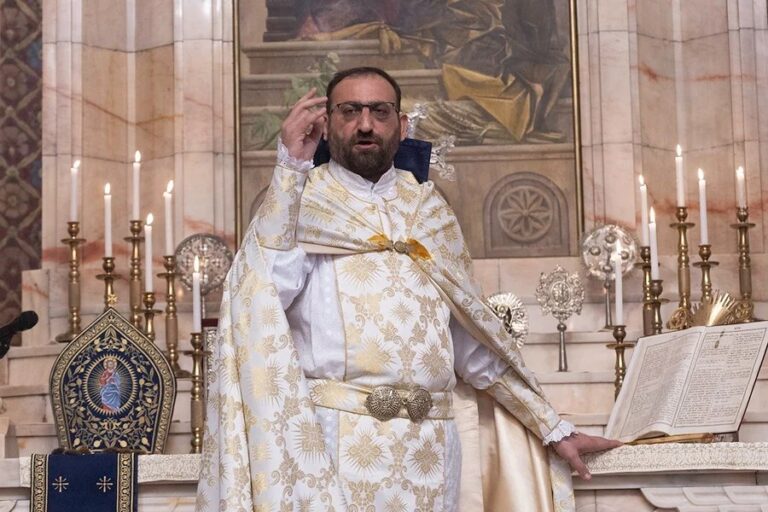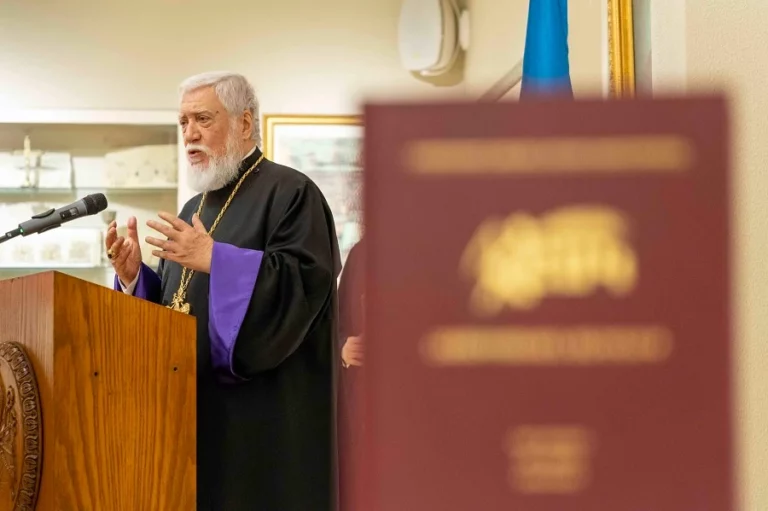‘Beginning having no end’: Today marks Komitas’ 155th anniversary
September 26 2024, 19:20

“The Armenian people found and recognized its soul, its spiritual nature” in Komitas’ songs. Komitas Vardapet is a beginning having no end. He will live through the Armenian people, and they must live through him, now and forever.”
Vazgen I, the Catholicos of all Armenians
September 26 marks the 155th anniversary of the great Armenian priest, musicologist, composer, arranger, singer, and choirmaster, Komitas.
Komitas (Soghomon Soghomonyan) was born on September 26, 1869 in Anatolia, Turkey in the town of Koutina. Soghomon lost his mother when he was less than one year old, and his grandmother took care of him. At age 7 Komitas entered the local elementary school. His father passed away when Soghomon was only 11 years old.
Soghomon could sing perfectly, and no wonder in Koutina he was nicknamed “a little vagrant singer”.
In 1881 the priest of Koutina, G. Dertsakyan, had to leave for Etchmiadzin to be ordained a bishop. At the request of the Catholicos he brought the gifted orphan boy with him to study at the Etchmiadzin Church Seminary. Twelve-year old Soghomon was selected out of the other 20 orphans to study at the Seminary. As it was forbidden to speak Armenian at that time the boy spoke Turkish and when being greeted by the Catholicos Gevorg IV, he replied, “I don’t speak Armenian, if you wish I will sing”. Then with his fine soprano voice he sang an Armenian sharakan (a church hymn) without understanding the words. Due to his exclusive aptitude Soghomon overcame all the obstacles in a very short time and perfectly learned Armenian.
In 1890 Soghomon was ordained a monk. In 1893 he finished studying at the seminary, then he was ordained a “Vardapet” (priest) and acquired his new name “Komitas” – the name of the outstanding poet of 7th century, the author of sharakans. At the seminary Komitas was assigned to teach music.
Along with teaching, Komitas organized a choir, an orchestra of folk instruments, and treated folk songs; he made the first researches in the field of Armenian Church music.
In 1895 Komitas was ordained an archimandrite. In the autumn of the same year he left for Tiflis to study at the musical college. However, when he met the composer Makar Yekmalyan, who had received his education at the conservatory of Petersburg, he changed his mind and started studying a course on harmony by that composer. These studies became the original forerunner and the firm basis for gaining the European technique of composition.
The further events of Komitas’s life had to do with the large music center in Europe – Berlin, where he went to study under the protection of the Catholicos, being financed by the largest Armenian oil magnate Alexander Mantashyan. Komitas entered the private conservatory of Professor Richard Schmidt.
In September 1899 Komitas returned to Etchmiadzin and started his musical activity right away.
In April 1915, Komitas was arrested together with the number of outstanding Armenian writers, publicists, physicians, and lawyers. After the arrest, accompanied by violence, he was deported far in Anatolia where he became a witness of the brutal extermination of the nation’s bright minds. Komitas remained in seclusion from the outer world, absorbed in his gloomy and heavy thoughts – sad and broken. In 1916 Komitas’ health deteriorated and he was put in a psychiatric hospital. However, there was no hope that he would recover. The medicine was powerless against the destructive disease.
The genius of Armenian music found his final shelter in Paris, in the suburban sanatorium Vil-Jouif where he spent almost 20 years of his life.
On the 22nd of October the life of the Great Komitas came to an end. In the spring of 1936, his remains were transported to Armenia and buried in Yerevan – in the Pantheon of prominent art figures.







